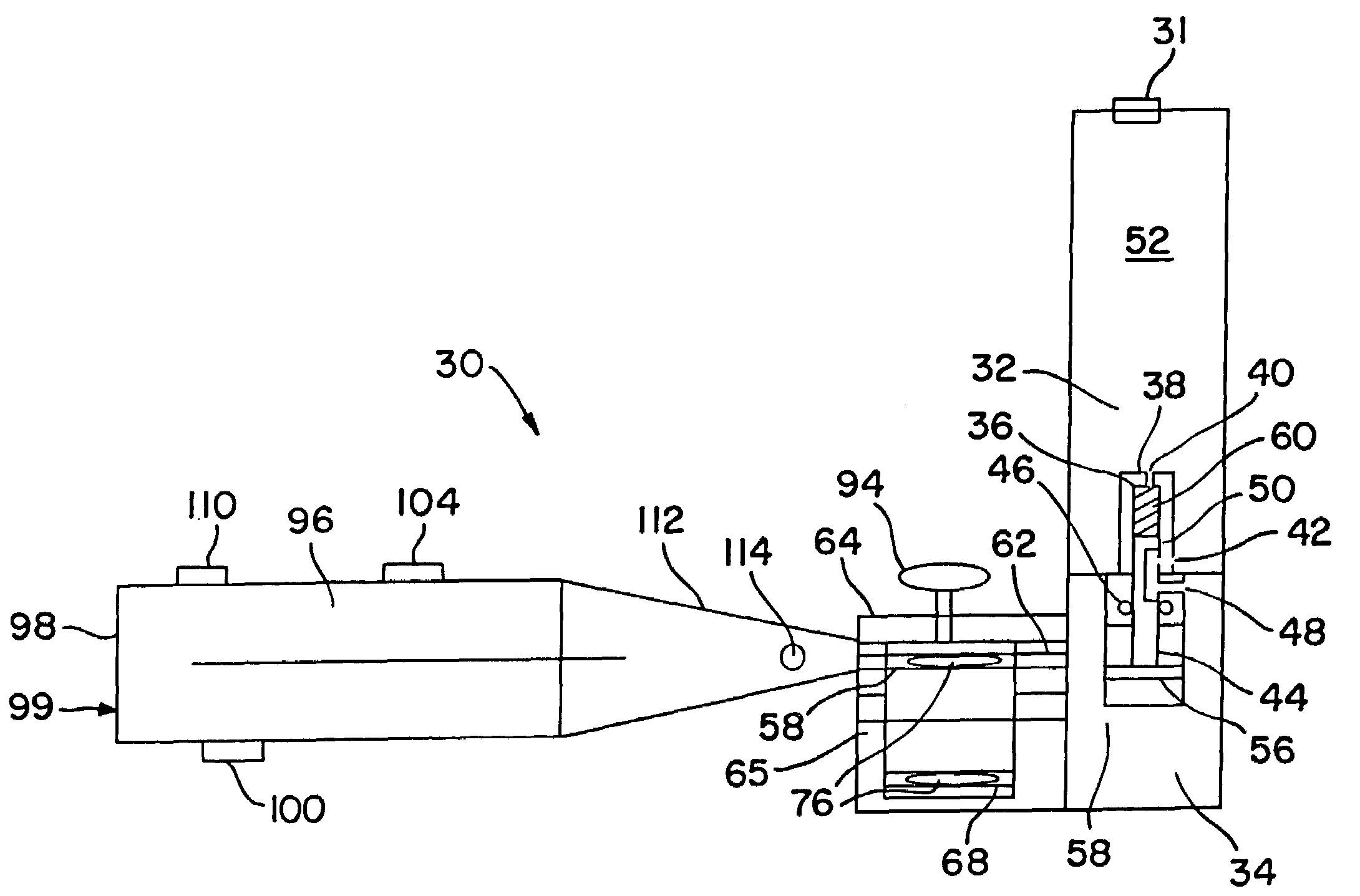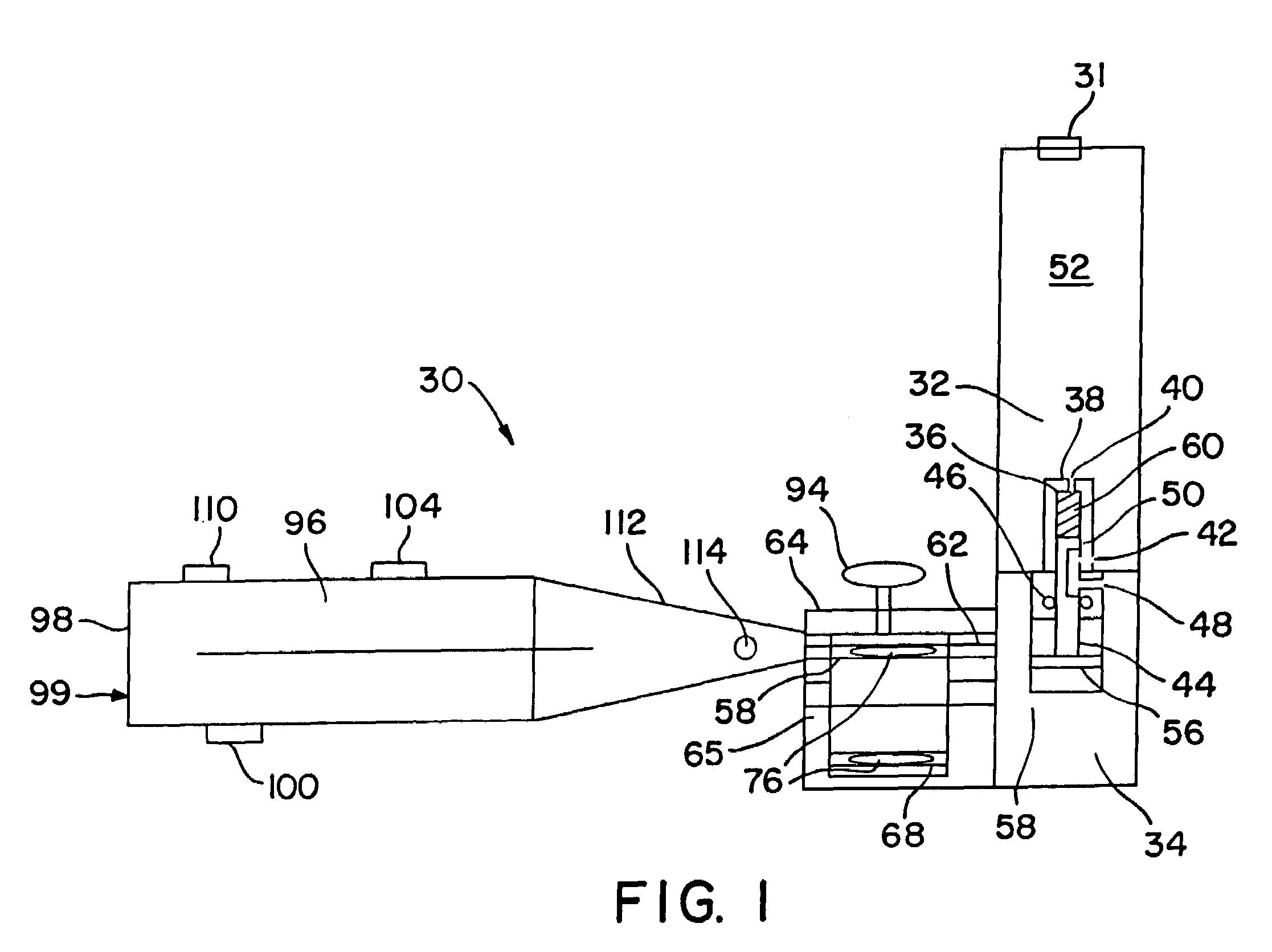In addition, there is a major effort to move away from CFC or other vapor pressure based propellant driven inhalers toward alternative technology, due to environmental issues.
This represents a risk factor to the patient, in that there is a therapeutic variable regarding the amount of dose delivered to the target system or site.
In addition, many new drugs being developed by companies in the biotechnology field based on peptides and proteins, exist as dry powder in their optimum and / or most stable form, and so these drugs cannot be injected using a needle or needle-less method, or administered transdermally.
This can reduce the quantity of these sensitive therapeutic molecules available for absorption into the blood in their original therapeutic structure, increasing the need to initially deliver a higher oral dose.
Rectal drug administration is neither pleasant, socially acceptable, or commercially viable except in extreme cases where no other choice exists.
The intravenous needle method of administering therapeutic drugs in liquid form in the arm or femorally, results in the dilution and loss of administered drug potency as the blood passes through the venous system back to the heart, then to the lungs, and finally into the arterial circulation for delivery.
This reduces the effect of dilution on the administered therapeutic dose in the bloodstream.
However, because any systemic drug administered by the lung does go straight to the heart first, the cardiac side effects of excipients and drugs administered by this method are an issue.
A key problem is in the maximizing the number of these smallest particles that are delivered to the terminal branches of the bronchioles and the alveoli.
The larger passages through which the air and drug particles travel generates turbulence, which also results in the impaction and loss of drug particles.
Additionally, in both cases, the systems in which Heliox were used were designed for the physical properties of air and not Heliox, and so were not optimized for Heliox.
Large particles traveling at high velocities are very susceptible to oropharyngeal deposition by inertial impaction.
This presents a problem to patients using more than one type of drug, i.e., one in suspension and one in solution, as the patient may shake the wrong MDI, or not shake the MDI that needs to be shaken before use.
The latter one would result in an incorrect dose of the drug being delivered and inhaled.
MDIs containing propellant and a suspension or solution, also present a challenge concerning stability over a temperature range.
A problem with both MDIs and DPIs is that there is often poor coordination between the patient pressing the actuator and the timing of the inhalation.
Another problem with MDIs is that they are based on propellants that rely on vaporization to generate pressure, and a drop in temperature occurs when vaporization occurs.
This can lead to reflex gagging which interrupts the continuous and deep inhalation required for optimum delivery of the drug.
In addition, water moisture in the mouth will condense rapidly in the cold vapor, causing the small liquid medication droplets to coagulate and drop out, reducing the percentage of drug actually deliverable past the oropharyngeal area.
This multitude of constituents in a MDI increases the work involved in production of the product and its packaging, can effect formulation stability, can cause aerosolization problems by clogging the nozzle, and may require either the shaking or non-shaking of the MDI Inhaler before use.
This is less effective than a highly focused directed stream of high pressure gas, which is consistently delivered at the same pressure.
The uniformity of fluidization of the dry powder would therefore be less using a manual hand pump, with the possibility therefore of generating larger percentages of larger size particles, which result in the variable and inconsistent loss of drug in the oropharyngeal and upper bronchi.
The higher the velocity of the gas hitting the dry powder, the greater the amount of powder dislodged and the turbulence induced, which can create a cloud of particles for inhalation.
One problem in using compressed gas vs. a hand pump to generate compressed air DPI (or a liquid MDI driven by CFC vapor pressure) is that the compressed gas pressure will decrease with usage.
In the case of gas driven MDIs, the pressure available for aerosolization decreases over time near the end of the capacity, unless the MDI has a cut off which does not allow dose administration below a certain minimal pressure required to achieve sufficient aerosolization.
However, the inhalation of particles at a fast rate, leads to impaction of a large percentage of particles on the back of the throat.
However, due to its bulkiness and requirement of sophisticated pressure and flow regulators, it is used only in research and hospital facilities.
Resistance to the flow of gas within the tracheobronchial tree results from convective acceleration and friction.
An obstruction in the upper airway causes a resistance to flow that is primarily convective and turbulent and therefore susceptible to modulation through a change in gas density.
Since airway resistance in turbulent flow is directly related to the density of the gas, Heliox, with its lower density than nitrogen or oxygen, results in lower airway resistance.
First, helium reduces the probability of turbulence.
In other cases where the gas flow velocity was altered, the aerosol nozzle used was designed for air and not Heliox or pure helium, so that the particle size distribution was not adapted to the change of gas.
The static charge will form an attractive force on the particles, causing them to clump together, rendering them of a collective size that is unsuitable for deep lung delivery.
This type of particle cohesion is highly undesirable because a few particles that are attracted together can double or triple the terminal settling velocity.
Moisture in the fluidization gas can also result in the clumping of particles.
This is a disadvantage of using inhaled air, air from the surrounding environment driven through a propeller, or air compressed using a hand pump that is part of an inhaler.
If an inhaler is used in a humid geographical location or during humid seasonal conditions, the humidity can affect the deliverable dose of drug particles in the size range required for penetration into the deep lung, thereby affecting the dose.
In addition, if moisture comes in contact with the powder before it is fluidized, the moisture can accumulate on the outer layer of the powder, forming lumps before fluidization occurs.
 Login to View More
Login to View More 


